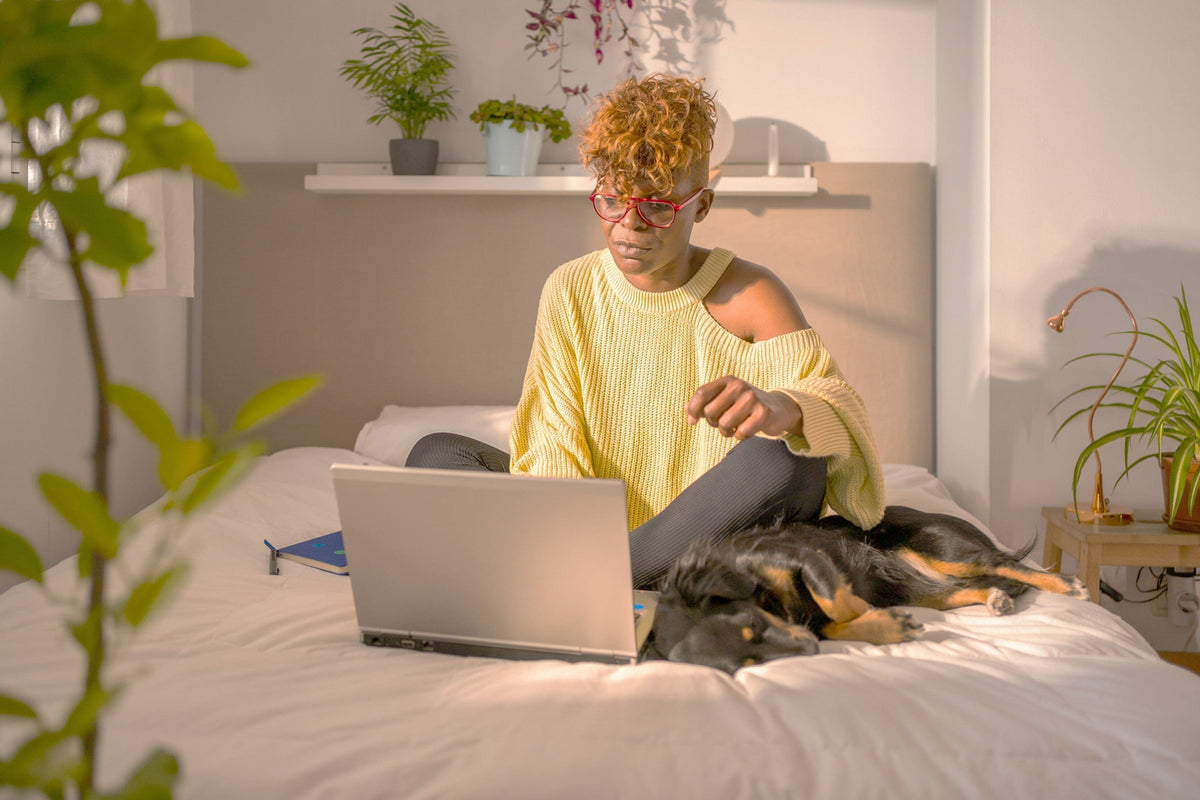The term menopause is commonly used as a sweeping generalization to encompass all the changes a woman goes through as her body prepares to, and finally stops menstruating.
But that's not entirely accurate.
Bookended by perimenopause and postmenopause, it’s the second of three stages that a woman experiences during her menopausal years. All three stages of menopause have distinct symptoms leading up to and following the end of menstruation. Knowing what changes and symptoms to look for, when to look for them, and how to treat them, can help make each of these stages of menopause more manageable.
What Are the Three Stages of Menopause?
The menopausal transition begins when the body's estrogen and progesterone levels decline. These volatile hormone shifts cause a woman's periods to become irregular, and eventually, stop completely.
Different terms are used to describe the beginning stages of menopause and what happens post-menopause. So, let's take a look at each phase:
- Premenopause, while not an official medical term or stage of menopause, the term “premenopause” may be used to refer to the later years of a woman’s childbearing or reproductive years, which is the period of time right before she begins to experience any perimenopausal symptoms (such as shifts in mood or missed periods).
- Perimenopause is the transitional time leading up to a woman’s final menstrual period. It starts when a woman begins to notice missed or irregular periods, which typically coincides with when estrogen and progesterone levels begin to shift more dramatically.
- Menopause is defined as a woman's final menstrual period. You'll know the period was your last one after you've gone a consecutive 12 months without experiencing another period.
- Postmenopause is the life stage immediately following menopause, once a woman hasn't had a period in 12 months and one day.
**Early menopause, while not a stage of menopause, some women may enter menopause early– more specifically between ages 40 and 45, either naturally or due to medical reasons (i.e. a hysterectomy, certain cancer treatments, your family history or if you’re a smoker). If a woman goes through menopause before age 40, it’s called premature menopause,1 which may also be caused by similar reasons.
Now that we’ve provided a more general overview of the stages of menopause, let’s dive into the specifics.
When Does Menopause Start?
The first, and often most confusing stage of menopause, perimenopause occurs when estrogen and progesterone levels begin to shift significantly. These hormonal changes can start to happen 4-8, or even 10 years before a woman stops having a period.2 What makes perimenopause so difficult to detect is that there is no specific age when symptoms start to occur. Furthermore, the symptoms can be vague and easily written off as the result of stress, fatigue, or lifestyle. Most often, women experience hormonal changes associated with perimenopause between the ages of 40 – 44, but this can vary a few years in either direction; for some women shifts can even begin in their 30s.3
The signs of perimenopause into menopause also vary from woman to woman and may include at least 34 different disruptive symptoms. Some of the more obvious and common menopause symptoms can include:
- Missed or irregular periods
- Hot flashes and/or night sweats
- Unexplained weight gain, especially around the midsection
Other, less obvious signs can coincide with:
- Headaches
- Hair loss
- Joint pain
- Changes in sex drive
A woman who is experiencing these symptoms with regularity and is in her early 40s or older, can request that her healthcare provider perform bloodwork to check her hormone levels.4 This may be able to help support whether she is in this first stage of menopause, or a different stage of menopause, and provide guidance on how best to address or treat the symptoms she’s experiencing. It’s important to note, however, that these blood tests may not provide definitive results for everyone.
Menopause
While many perimenopausal symptoms tend to get lumped under the heading of “menopause”, that’s just not the case. In fact, menopause is actually only one 24-hour period in time. It’s the day that marks one year from a woman’s last period.5
When a woman says she’s “going through menopause,” she’s typically referring to the years leading up to it or after it, whether she realizes it or not. The actual day of menopause typically occurs around the age of 516, but like perimenopause, it can vary by a few years in either direction. The symptoms are very similar, but may increase in frequency or intensity as a woman nears actual menopause and postmenopause.
The Stages of Menopause End with Postmenopause
How long does menopause last? Once a woman has reached her one-year-without-a-period milestone, she’s in the third stage of menopause and considered to be postmenopausal. During this time, some of the previously experienced symptoms during the first stage of menopause, perimenopause, may have lessened or even disappeared completely. However, this stage of menopause brings its own list of things to consider.
The postmenopausal years can bring with it an increase in risk of cardiovascular disease, including stroke, as well as osteoporosis, urinary tract infections (including bladder habit changes), and some cancers.7 That’s why it’s important to maintain a good relationship with your gynecologist or to check-in with your healthcare provider to determine your risk factors for these and other diseases or health conditions that could be related to this third stage of menopause, postmenopause.
Copings with The Three Stages of Menopause
Transitioning through the different stages of menopause doesn’t have to be something you struggle through. There are plenty of ways to address the symptoms and keep them from disrupting your daily life.
If prescriptions solutions, such as hormone replacement therapy, aren’t your ideal treatment approach, there are naturally derived alternatives available that are designed to provide relief from some of the more disruptive perimenopause and menopause symptoms such as hot flashes and vaginal dryness, as well as those that can help to increase sexual satisfaction, ease mood swings, and more.
Diet can also play an important role in both symptom management and severity during any of the stages of menopause. Studies have shown that a diet high in fat and sugar can exacerbate night sweats and hot flashes.8 Some healthcare providers recommend the heart-healthy Mediterranean Diet to their menopausal patients for its myriad of health benefits, which can include a reduction in inflammation, enhanced immune function, optimized cardiovascular health and improved energy levels.9
As always, be sure to consult with your healthcare provider before trying any new supplements or incorporating drastic dietary changes. It’s also important to speak with your provider to determine whether or not additional treatments, such as certain prescriptions or hormone replacement therapy, may be necessary to further address your symptoms.
Knowledge is everything when it comes to managing the different stages of menopause. Understanding the symptoms and how to manage them empowers women to better help themselves. In today's world, there is no reason for a woman to struggle with treatable menopause symptoms. Life is too short to feel uncomfortable.
For a quick video on the stages of menopause, from Bonafide Chief Medical Officer, Dr. Alyssa Dweck, check out the below:
Resources
- https://www.womenshealth.gov/menopause/early-or-premature-menopause
- https://www.menopause.org/for-women/menopauseflashes/menopause-symptoms-and-treatments/menopause-101-a-primer-for-the-perimenopausal
- https://www.mountsinai.org/health-library/report/menopause
- https://www.healthline.com/health/menopause/tests-diagnosis
- https://www.menopause.org/for-women/menopauseflashes/menopause-symptoms-and-treatments/menopause-101-a-primer-for-the-perimenopausal
- https://www.npr.org/sections/health-shots/2020/01/18/797354824/menopause-starts-younger-than-you-think-heres-what-you-need-to-know
- https://www.nhsinform.scot/healthy-living/womens-health/later-years-around-50-years-and-over/menopause-and-post-menopause-health/after-the-menopause
- Herber-Gast GC, Mishra GD. Fruit, Mediterranean-style, and high-fat and -sugar diets are associated with the risk of night sweats and hot flushes in midlife: results from a prospective cohort study. Am J Clin Nutr. 2013;97(5):1092-1099.
- https://www.eatingwell.com/article/2061785/anti-inflammatory-mediterranean-diet-plan/










Comments
Post commentThank you for this informative article.
Great article. Very informative. I learned the stages of menopause. Found out I was actually in my postmenopausal stage. Thank you!
After this reading, I learned about the risks associated with the postmenopausal stage and the importance of being proactive in order to avoid them.
Your article offers a comprehensive overview of the stages of menopause, clearly distinguishing between perimenopause, menopause, and postmenopause. I found the explanation of perimenopause particularly enlightening, especially how hormonal fluctuations during this phase can lead to symptoms like irregular periods and hot flashes. It’s reassuring to know that understanding these stages can help in managing the transition more effectively. Do you have any recommendations for natural remedies to alleviate some of these symptoms?
THIS WAS A GREAT ARTICLE AND PROVIDED A LOT OF INFORMATION AND INSITE!! UNTIL I READ THIS ARTICLE, I FELT LIKE I WAS GOING CRAZY OR BEING OVER DRAMATIC ABOUT SYMPTOMS I AM EXPERIENCING!! I AM DEFINITELY GOING TO RECOMMEND THIS ARTICLE AND THIS SITE TO FRIENDS AND COLLEAGUES.